Roundwood Park
When did Roundwood Park come to be what it is today?
Roundwood Park was built in 1893, designed by Oliver Claude Robson. Robson had been the Surveyor of the Willesden Local Board since 1875. As an engineer, he was responsible for many major works in Willesden including sewerage and roads. He was also a strong advocate for the environment and planted lots of trees across Willesden. He was a well-loved figure in the local community, a local newspaper wrote, ‘everyone who comes into contact with him remarks upon his unvarying courtesy’.
The park took two years to lay out, planting 14,500 new plants and shrubs. Robson employed local people who had no jobs to work on the landscaping and the planting. The park opened in 1895. It was opened by the Chairman of the Middlesex County Council, R.D.M. Little, and a brass band played. Over the years the trees have grown and the plants have been both cultivated and replaced, but it remains largely as Robson designed it.
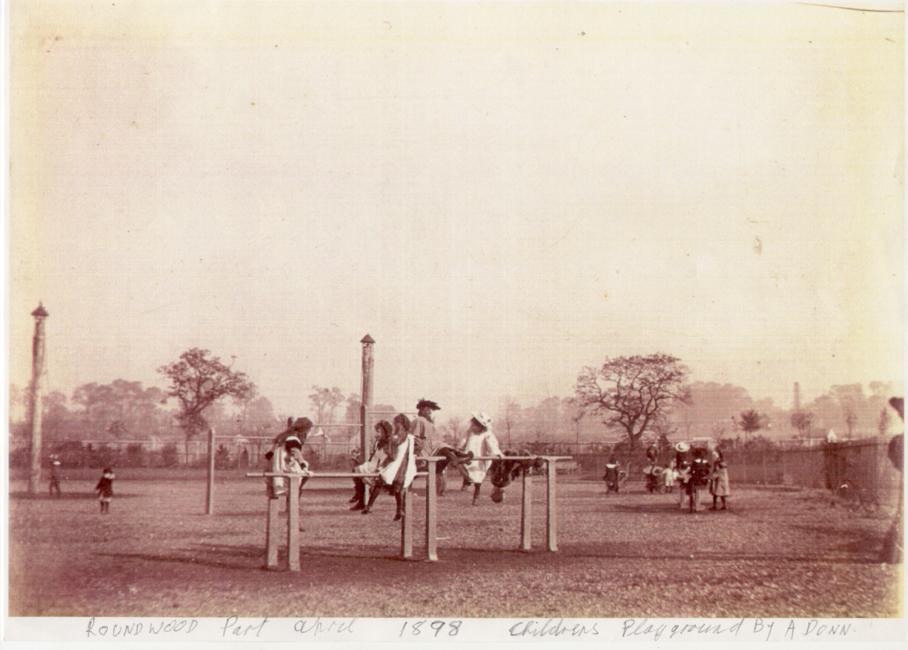

What was there before?
Before the park was built there were open fields.
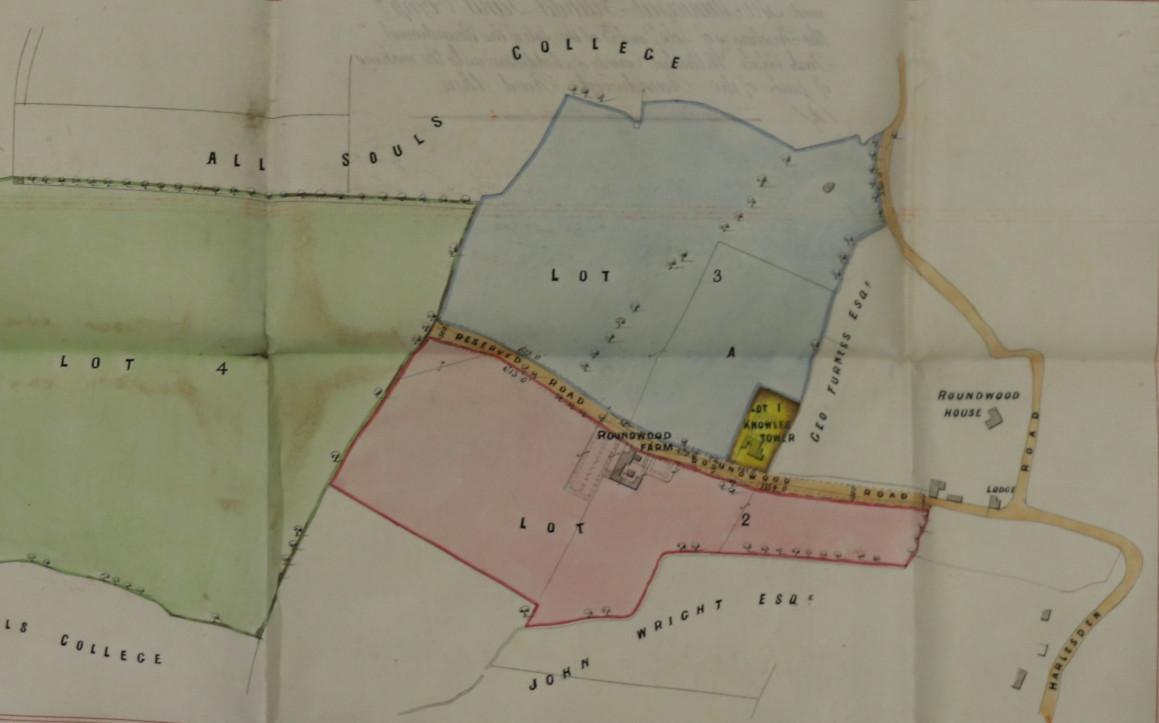
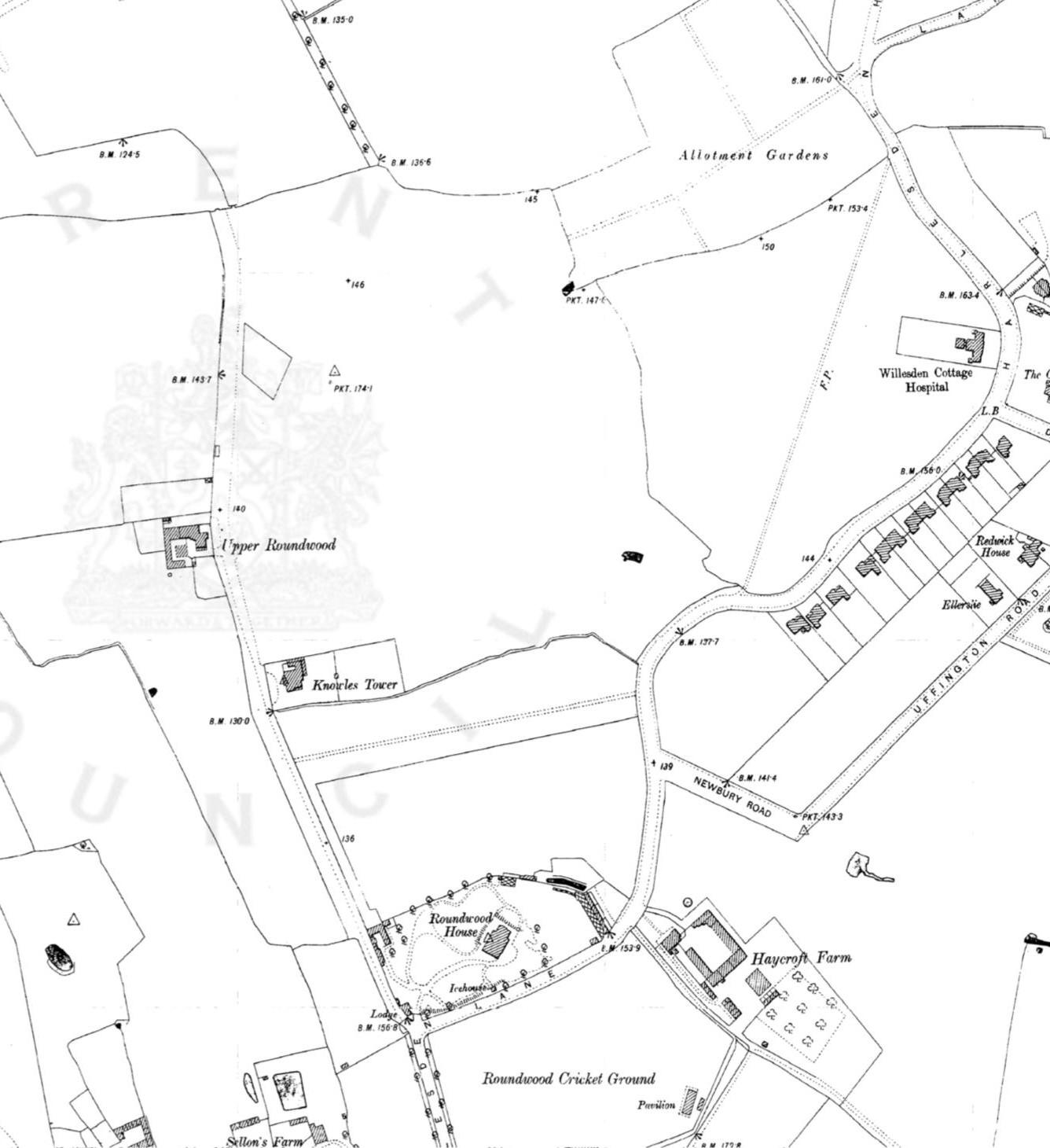
The land nearby was being bought and built on for housing. The hill at the top of Roundwood Park was once known as Hunger Hill Field. Hunger Hill Field was common land. This meant that no-body owned it and anyone could take their animals there to graze.
On later maps we can see the land had been divided up and was owned and sold in separate parts, known as ‘lots’.
The area became known as Roundwood Park Estate and was split into these separate lots by 1882. There were several houses on this land by 1882 including Knowles Tower, Roundwood House (built 1836) and Roundwood Farm (also called ‘Upper Roundwood’ or later, ‘The White House’)
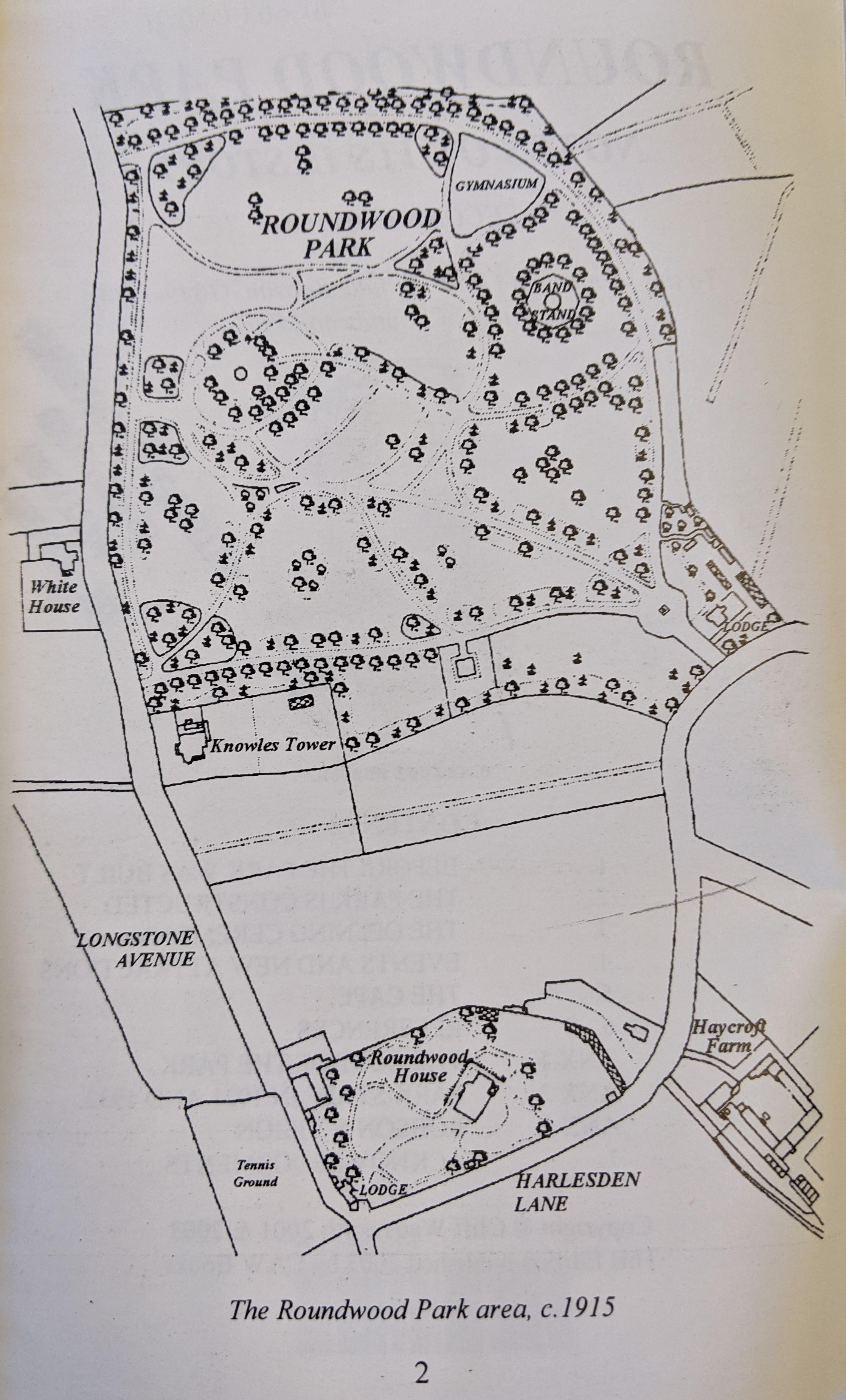
How did it come to Brent Council?
Willesden Local Government recognised the need for green space for local people in an area which was being built up very fast. The lot on which the park was built was bought by the Willesden Local Government Board in 1892 from Messrs. Perkins & Weston for £14,500. They bargained hard for a good price for rate-payers at the time.
When was the café built?
Two years after the park opened, in 1897, a ‘refreshment chalet’ was designed and built by Claude Robson.
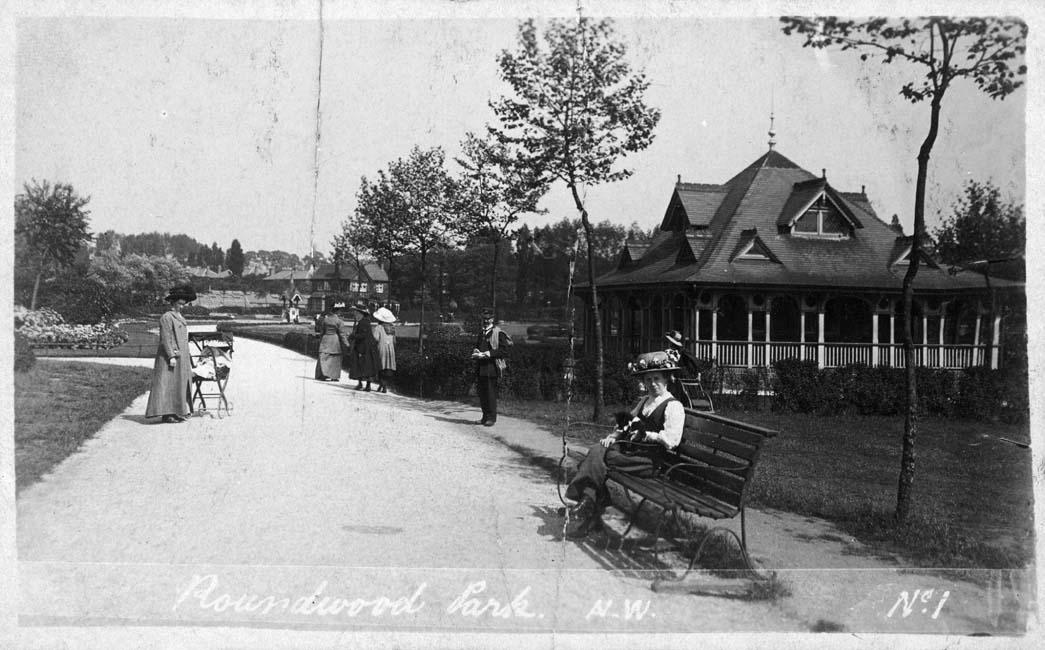
This postcard shows a path in Roundwood Park with the old refreshment chalet on the right. You can see that the visitors to the park are wearing Edwardian (1900s) clothes. The women wear large hats, the man appears to be in a uniform, possibly that of the park attendant. You can see the water fountain and the lodge in the background.
By the 1950s it had fallen into disrepair. In 1958, a new café was built. It has been added to over the years and remains a popular destination for families.
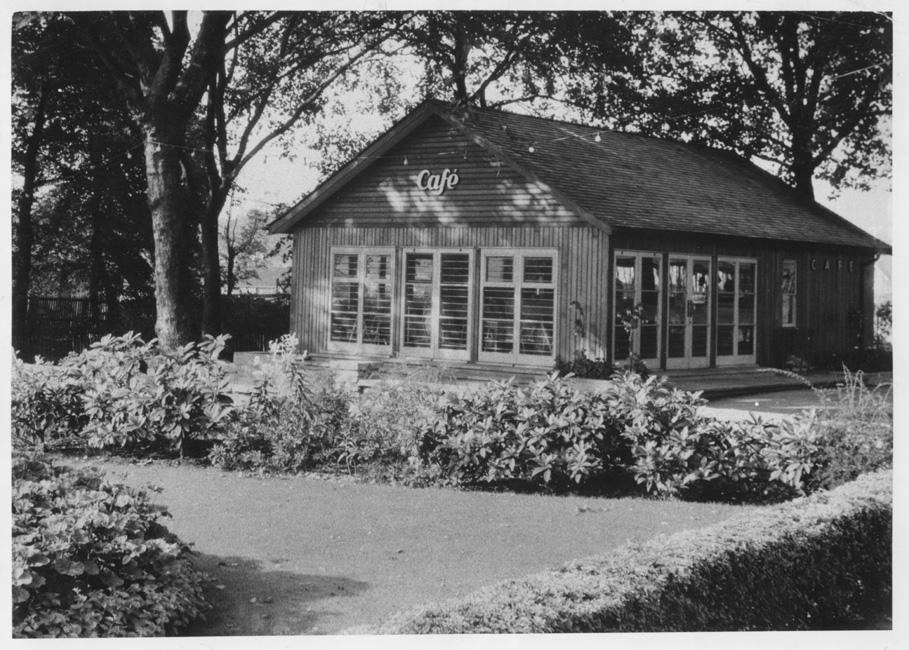
This picture shows the new café, not long after it was built in 1958
When were tulips first grown in the park?
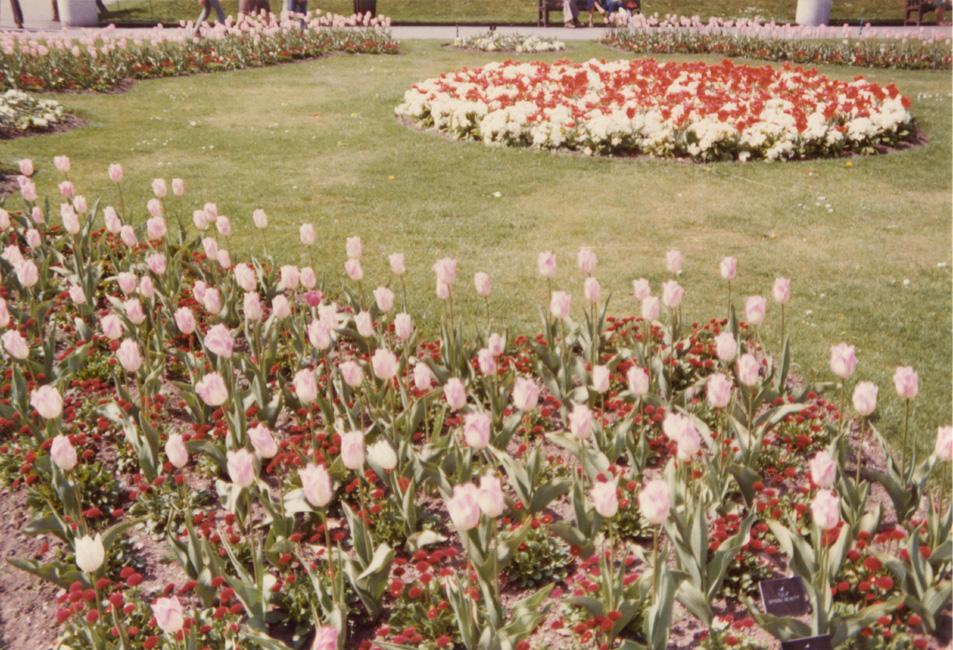
This picture, taken in the 1970s or 1980s, show tulip beds in Roundwood Park. But they have been there since the beginning of the park! When the park opened in 1895, an article in the Willesden Chronicle describes the landscape of the park, mentioning,
‘lovely crescent beds of bright red, pure white tulips near the gates, and purple ones higher up’.
- Willesden Chronicle, 24 May 1895.
Have there been any famous events that happened there?
In the early years brass bands played at a bandstand. The bandstand was in the north of the park on the hill. The original bandstand was wrought iron, shown in the photograph.
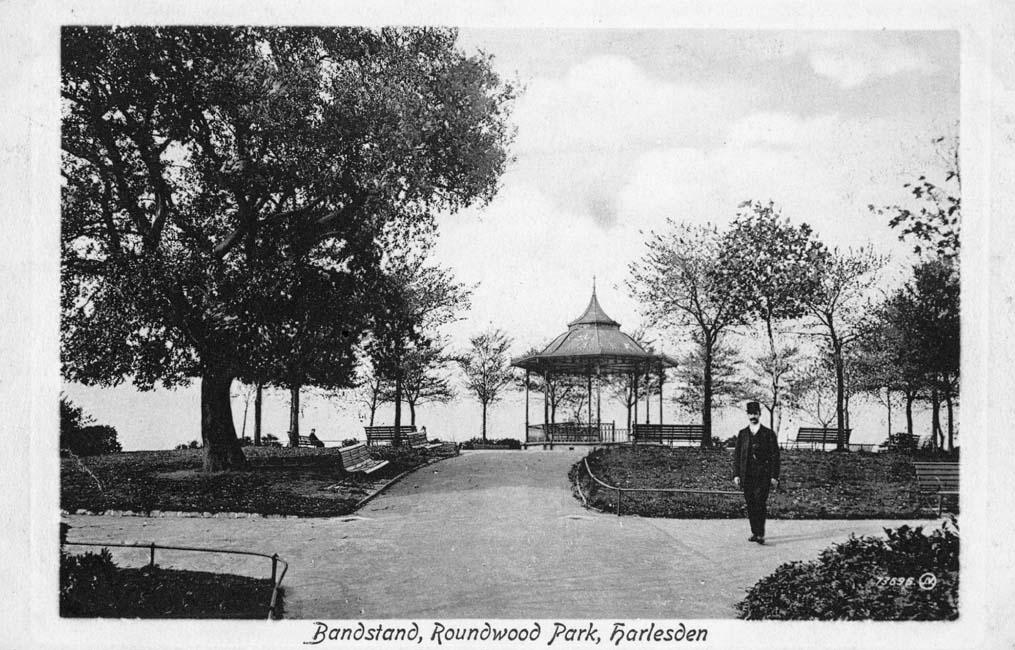
The main attraction at the bandstand was the Willesden Junction Brass Band, who played on Thursday evenings, and at weekends. For the first ten years they were not paid, but made money by selling seats and programmes. Then, in 1905, a change in the law allowed the Council to pay the band £25 to play on Sundays. The concerts became so popular that the hilltop site was not large enough to accommodate the audience. The bandstand on the hill was therefore converted into an observation point and a new, more rustic-looking bandstand opened south of the playground.
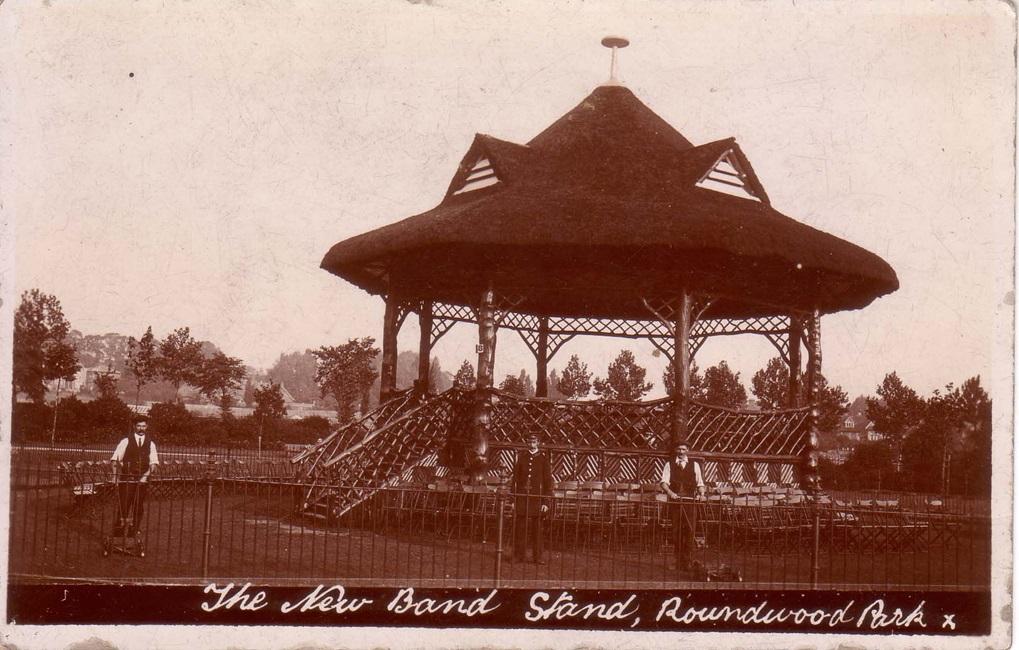
Later on, there was the ‘Willesden Show’, an annual event that celebrated growing fresh vegetables and flowers, with prizes. The show also hosted livestock and pets, with dog-handling, sheep shearing, as well as arts and crafts.
In 1965, when Willesden Borough merged with Wembley and became Brent, the show was renamed the ‘Brent Show’.
In the 1960’s a theatre was built to stage open air performances, but sadly fell into disuse.
Firework displays, for the 5th November, were a regular attraction for many years, and other events such as Respect Festival, were very popular.
When was the birdcage built?
In 1955, the Willesden & District Cage Birds Society proposed an aviary (large bird cage) in the park, which was accepted and the aviary was built. It was stocked with birds by the society. At times the birds were subject to theft, such as in 1963, when 100 budgerigars were stolen. The cage was subsequently reinforced, and still exists to this day!
Roundwood Park today:
Roundwood Park is still very popular as a space for the people of Harlesden and the surrounding area to enjoy. It is used for exercise, and hanging out. It was an important place during the Covid-19 lockdown for people to come to, and a reminder of the importance of green spaces in London.
With thanks to Atwain Johnson and his mum Antoinette.
Find out more here:
Cliff Wadsworth, Roundwood Park, Notes on its History, 2003. Brent Museum and Archives, LHC/1/PAR/2
Cliff Wadsworth, Robson the Roadmaker, 1997 (Available at Brent Museum and Archives). Brent Museum and Archives, LHC/1/PAR/2
Please also see Brent Museum and Archives webpages for more information on the history of Harlesden and Brent.
